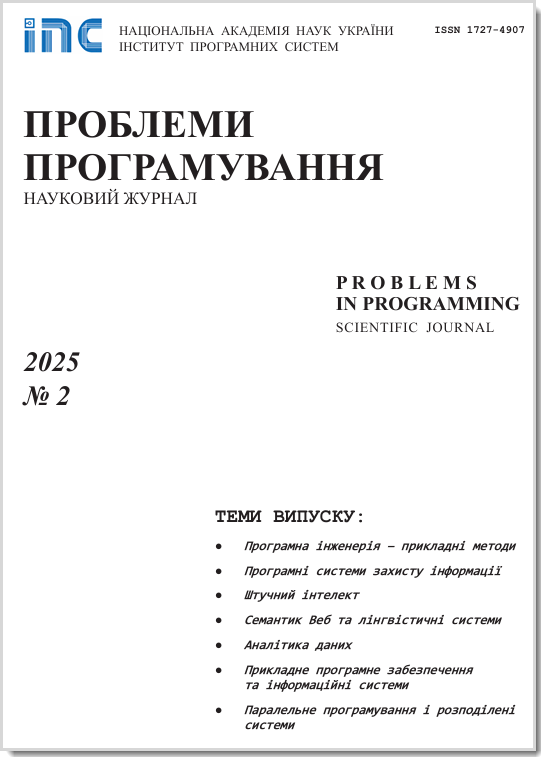Specialized software for simulating the multiple control and modulations of human hemodynamics
Abstract
Most models of human hemodynamics describe only a small part of physiological mechanisms that directly or indirectly alter activities of the heart pump and vascular tones. Therefore, a very narrow range of tasks related to cardiovascular physiology can be solved using these models. To essentially widen this range, special software based on quantitative models of mechanisms providing the overall control of circulation is created. In the complex model, a multi-compartmental lumped parametric model of hemodynamics, provided under stable values of blood volume and cardiovascular parameters, forms the core model. It consists of two ventricles and 21 vascular compartments. Additional dynamic models represent mechanisms of mechanoreceptor reflexes, chemoreceptor reflexes, main effects of angiotensin-II, antidi uretic hormone, vasopressin, adrenalin, and cardiac or brain ischemia. The software has a physiologist-oriented user interface. It provides the investigator with multiple capabilities for simulating different states of each included mechanism. The interface also allows creating arbitrary combinations of the chosen mechanisms. In particular, the chosen model of these mechanisms is activated or deactivated via the user interface. The activated model modulates initial values of the core model. Special opportunities have been created for simulating different hypotheses concerning the etiology of arterial hypertension. Simulation results are presented with graphs. The user interface documents each simulation as a special file that can be saved for later independent analysis. The software, created in the frame of .NET technology, is an autonomous .EXE file for executing on PС. Software is also a good computer program to be used for educational purposes for illustrating the main physiological and certain pathological regularities to medical students.
Prombles in programming 2021; 2: 42-53
Keywords
Full Text:
PDFReferences
Larrabide I., Blanco P.J., Urquiza S.A., Dari E.A., Ve´nere M.J., de Souza e Silva N.A., Feijo´ R.A. HeMoLab – Hemodynamics Modelling Laboratory: An application for modelling the human cardiovascular system. Computers in Biology and Medicine. 2012, V. 42, P. 993–1004.
Fresiello L., Ferrari G., Di Molfetta A., Zieliński K., Tzallas A., Jacobs S., et al. A cardiovascular simulator tailored for training and clinical uses. J Biomed Inform 2015,57. P. 100–112.
Grygoryan R.D. Problem-oriented computer simulators for solving of theoretical and applied tasks of human physiology. Problems of programming. 2017, №3, Р. 102-111.
Grygoryan R.D., Lissov P.N. A software-simulator of human cardiovascular system based on its mathematical model. Problems of program ming. 2004, №4. С.100-111 (Rus).
Grygoryan R.D., Degoda A.G., Kharsun V.S., Dzhurinsky Y.A. A simulator of mechanisms of acute control of human hemodynamics. Problems of programming, 2019;1:90-98. (Rus.) doi.org/10.15407/pp2019.01.090.
Grygoryan R.D., Degoda A.G., Dzhurinsky Y.A. A simulator of mechanisms of long-term control of human hemodynamics. Problems of programming, 2019;4:111-120.(Rus). doi. org/10.15407/pp2019.04.111.
Grygoryan R.D., Aksenova T.V., Degoda A.G. A computer simulator of mechanisms providing energy balance in human cells. Cybernetics and computing technologies. 2017, №2 (188), P.65-73. (Rus).
Grygoryan R.D., Lissov P.N., Aksenova T.V., Moroz A.G. The specialized software-modeling complex "PhysiolResp". Problems of programming, 2009, 2:140-150 (Rus).
Grygoryan R.D. The optimal circulation: cells’ contribution to arterial pressure. 2017, Nova Science, N.Y., 298 p.
Grygoryan R.D. The unknown aspects of arterial pressure. Znanstvena misel journal, 2019, 33:19-23.
Grygoryan R.D., Yurchak O.I., Degoda A.G., Lyudovyk T.V. A software technology providing tuning procedures of a quantitative model of human hemodynamics. Problems of programming, 2020;4:03-13. (Ukr). CrossRef
DOI: https://doi.org/10.15407/pp2021.02.042
Refbacks
- There are currently no refbacks.




